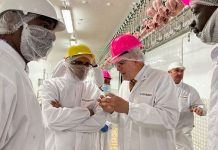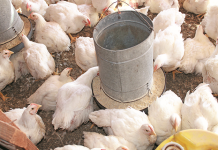I would like to congratulate Puleng Ndlovu, the young farmer from Nigel who won the recent Obaro Feedlot and Livestock Improvement Project (OFLIP) and African Meat Industry Company (Samic) carcass competition. Puleng, an up-and-coming cattle farmer who was featured in the 13 April 2012 issue of Farmer’s Weekly, won a Bonsmara bull bred by Red Gate Bonsmaras.
I would also like to congratulate Limpopo farmer Dikeledi Mahapa, who was the runner-up. She started farming less than three years ago, and has already proved more than capable. After attending the competition, I found myself wondering why we keep saying that we need to attract more youth into agriculture. As Puleng and Dikeledi show, there are already young people out there doing an incredible job.
According to Samic, the carcass competition is aimed at promoting optimal red meat production and a high quality product that satisfies market requirements. It also showcases the advantages of the classification system and demonstrates to producers that the desired carcass characteristics are visible on live animals.
The competition is divided into two categories: emerging and commercial farmers. It was gratifying to see that the majority of the farmers competing in the former category could not have been older than 30. The fact that they participate in this type of competition tells me that they take their farming very seriously. Until recently, this competition offered no big prizes, simply a certificate; the only money the participants received was what they earned for their carcasses. It appears that these youngsters were interested mainly in testing their skills and abilities.
A need for more entrants
Considering what Samic wants to achieve with this competition, we should be actively encouraging other young cattle farmers to participate. They could learn a great deal about livestock techniques. The goal of a livestock farmer is to produce quality red meat at a profit. With OFLIP’s involvement, farmers could learn the crucial skills needed to produce top quality carcasses that fetch high prices.
Some of the farmers who have taken part in the programme, such as Abram Motlhabane, who farms with Bonsmaras in Northem, Limpopo, are today doing well in the commercial farmer category.
Private and public sponsorships
“By taking part in the Obaro project and competing in the carcass competitions, I’ve learnt a lot about producing a quality product,” says Abram. Another successful ‘graduate’ is Lucas Morake, a successful young cattle farmer from Bethanie near Brits who recently qualified as a cattle judge.
I would like to encourage private and public organisations in the industry to invest in these competitions through sponsorships. In this way, we will be able to attract more young participants. It’s pointless to say that we want more young people in agriculture if we fail to take care of the ones who are already there.













